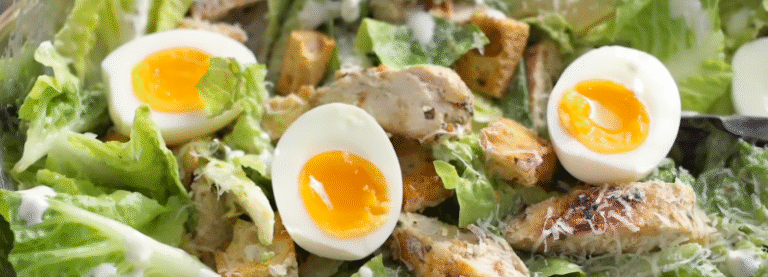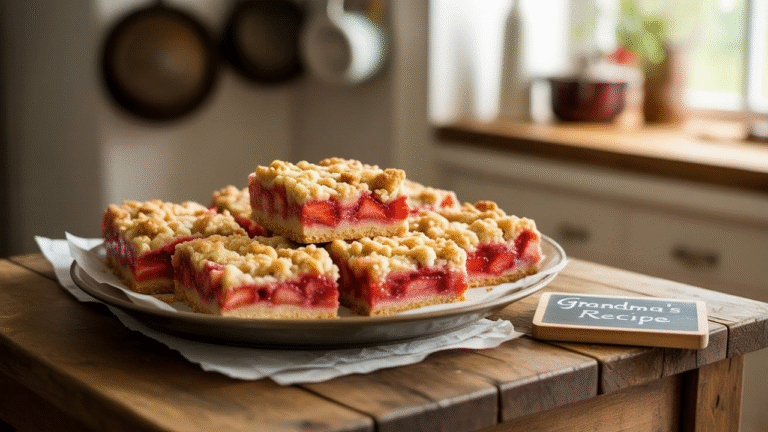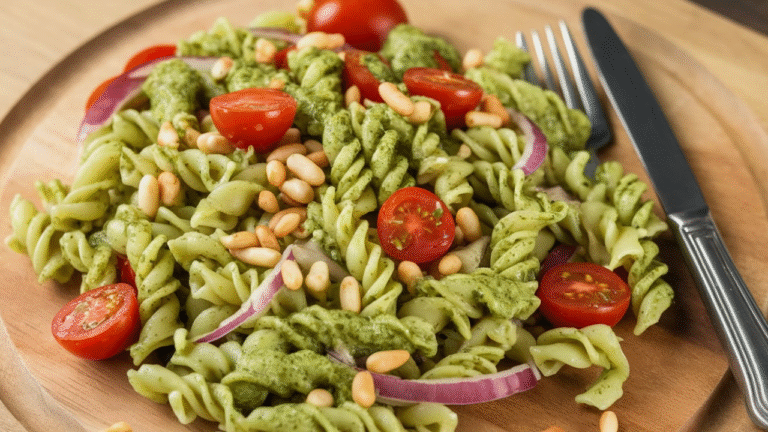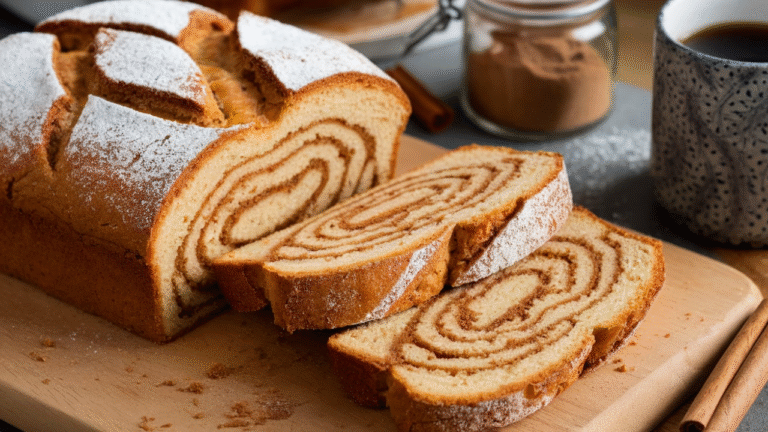Tomato pie isn’t just a recipe—it’s a piece of Southern tradition, a comforting dish that brings warmth to your table with its flaky crust, juicy tomatoes, creamy filling, and bubbling cheese. If you’ve ever bitten into a slice of perfect tomato pie, you know it balances tangy sweetness with savory richness in a way that feels like a hug from the inside out. The beauty of this recipe is its simplicity. You don’t need fancy ingredients or complicated techniques, just fresh tomatoes, a little patience, and a willingness to let natural flavors shine.
In this guide, I’ll take you through every detail of making a tomato pie so delicious you’ll guard the leftovers like treasure. I’ll share tips I’ve learned in my own kitchen, explain why each step matters, sprinkle in some helpful stats and food science, and make sure by the end you feel confident to bake your own masterpiece.
Why Tomato Pie Works So Well
At its core, tomato pie is a celebration of fresh tomatoes. When baked, tomatoes release their natural juices, becoming sweeter and more concentrated in flavor. The pie crust provides a buttery, flaky base, while the creamy cheese and mayo filling balances acidity and adds richness. Think of it as the Southern cousin of pizza or quiche—familiar, yet unique.
Tomatoes themselves are loaded with flavor compounds, most importantly glutamic acid, which gives them that savory umami punch. Combine that with cheese (also full of glutamates), and you’ve got an irresistible flavor synergy. According to USDA stats, tomatoes are also packed with lycopene, a powerful antioxidant linked to heart health. So while this pie feels indulgent, it has a bit of nutritional backup too.
Choosing the Best Tomatoes
The tomatoes you choose make or break your pie. If you use watery, bland supermarket tomatoes, your pie will end up soggy and lifeless. Aim for ripe, firm tomatoes with vibrant color and a sweet smell. Here’s what works best:
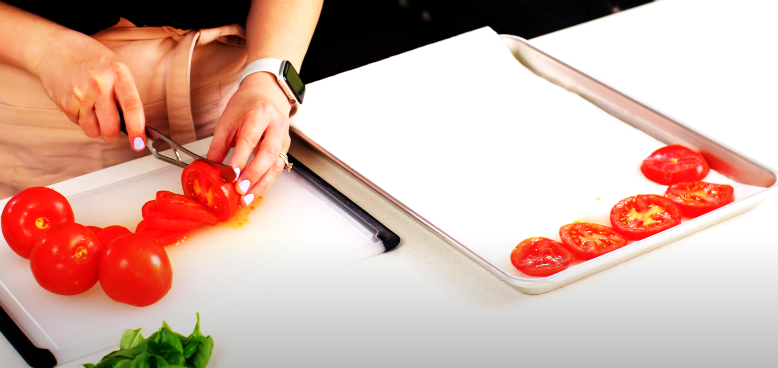
- Heirloom tomatoes: Their quirky shapes and rainbow colors aren’t just for show. They have intense, complex flavors that shine in tomato pie.
- Roma tomatoes: Meaty, with fewer seeds and less water, they’re ideal for avoiding sogginess.
- Garden-fresh tomatoes: If you grow your own, this is the time to show them off. A sun-ripened backyard tomato can outshine anything in the store.
Personal tip: I once made tomato pie with a mix of bright yellow heirlooms and deep red beefsteaks—it looked like a stained-glass window when sliced, and guests couldn’t stop staring before devouring it.
Prepping Tomatoes Like a Pro
The number one mistake people make is not draining their tomatoes properly. Tomatoes are about 94% water. If you just slice them and toss them into the crust, you’ll end up with tomato soup instead of pie. Here’s how to handle them:

- Slice the tomatoes into medium-thick rounds.
- Lay them on paper towels or a clean kitchen towel.
- Sprinkle lightly with salt to draw out moisture.
- Let them sit for at least 20–30 minutes.
- Pat them dry before layering in the pie.
This simple step ensures your filling stays creamy instead of watery. Think of it like ringing out a sponge—you want the flavor, not the liquid.
Building the Perfect Crust
A flaky crust is the foundation of a great tomato pie. You can go with homemade or store-bought, but here’s the truth: homemade always wins. The buttery layers contrast beautifully with the tang of tomatoes.
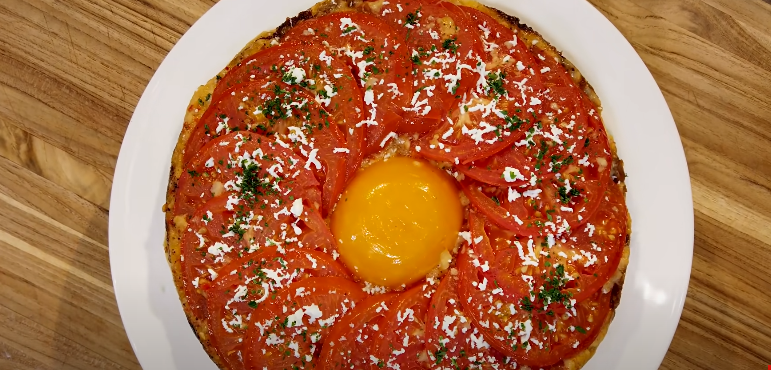
For a foolproof crust:
- Use cold butter (small chunks) and ice water when mixing. The cold fat creates steam pockets while baking, which turn into flaky layers.
- Don’t overwork the dough—keep it crumbly before chilling.
- Always blind bake your crust for tomato pie. This means partially baking it before adding the filling, so it stays crisp under all those juicy tomatoes.
Blind baking tip: Line the crust with parchment paper, fill it with dried beans or pie weights, and bake at 375°F for 15 minutes. Remove the weights and bake another 5 minutes until lightly golden.
The Creamy Filling
The filling is what makes tomato pie so addictive. It’s not just cheese—it’s cheese mixed with mayonnaise, which melts into a custardy, tangy blanket over the tomatoes. Some people raise an eyebrow at mayo in pie, but once you taste it, you’ll understand.
A classic mix:
- 1 cup shredded sharp cheddar
- ½ cup mozzarella (melts beautifully)
- ½ cup mayonnaise
- A sprinkle of Parmesan for salty depth
You can play around with flavors. Add a little smoked gouda for a bolder taste, or mix in cream cheese for extra richness. The mayo keeps everything moist and ensures it spreads evenly.
Layering for Maximum Flavor
Now comes the fun part: assembly. Think of it like building a flavorful lasagna.
- Start with a layer of drained tomatoes on the crust.
- Sprinkle lightly with fresh herbs—basil, thyme, or oregano work beautifully.
- Add a thin layer of the cheese-mayo mixture.
- Repeat the layers until you run out of tomatoes, ending with cheese on top.
This layering ensures each bite gives you flaky crust, juicy tomato, herby freshness, and creamy cheese.
Baking to Golden Perfection
Bake your pie at 350°F for 30–40 minutes, until the top is golden and bubbling. The smell alone will have everyone in the house circling the kitchen like hungry cats.

Let it rest for at least 10 minutes before slicing. This gives the filling time to set so it doesn’t ooze everywhere. Tomato pie is actually even better slightly warm or at room temperature—the flavors settle and mingle.
Flavor Boosters and Variations
While the traditional recipe is unbeatable, you can customize your tomato pie depending on your mood.
- Add caramelized onions for sweetness.
- Toss in crispy bacon crumbles for a smoky kick.
- Use different cheeses like feta, provolone, or pepper jack.
- Try a cornmeal crust for extra crunch.
- Drizzle with balsamic reduction before serving for a gourmet touch.
One time, I added roasted garlic cloves between layers, and it turned into something between tomato pie and garlic bread—pure heaven.
Serving and Pairing
Tomato pie is versatile. It works as a main dish for lunch or dinner or as a side with grilled meats. Pair it with:
- A crisp green salad with vinaigrette (balances richness).
- A chilled glass of white wine like Sauvignon Blanc.
- Sweet iced tea if you want to go full Southern tradition.
For summer picnics, tomato pie holds up surprisingly well at room temperature. It’s also a fantastic dish for potlucks—people always ask for the recipe.
Tomato Pie Around the Table
Here’s the thing about tomato pie: it has a way of creating conversation. I’ve brought it to gatherings where people argued whether it’s more like pizza or quiche. Others debated if mayo belongs in pies at all (spoiler: it does here). But no one left a single slice on the platter.
Food connects us, and tomato pie is one of those dishes that feels both homey and special. It doesn’t scream “fancy,” but it tastes like something you’d get at a charming Southern café.
The Science of Why You’ll Love It
If you like numbers, here’s the breakdown. Tomatoes provide:
- About 22 calories per 100g, making them light yet flavorful.
- High levels of Vitamin C (28% of your daily value in one cup).
- Lycopene, linked to a 30% lower risk of heart disease according to a Harvard study.
The cheese and mayo bring fat, which not only makes the dish comforting but also helps your body absorb fat-soluble nutrients like lycopene more efficiently. In other words, that creamy topping isn’t just delicious—it makes the tomatoes healthier.
Storing and Reheating
If by some miracle you have leftovers, here’s how to keep them tasty:
- Store slices in an airtight container in the fridge for up to 3 days.
- Reheat in the oven at 325°F for about 10 minutes to keep the crust crisp.
- Avoid the microwave—it makes the crust soggy.
Some folks even swear tomato pie tastes better the next day after the flavors have had time to meld. I agree.
Common Mistakes to Avoid
- Skipping the draining step: Leads to a soggy disaster.
- Using underripe tomatoes: They lack sweetness and depth.
- Not blind baking the crust: You’ll regret it when the bottom is mush.
- Overloading with cheese: More isn’t always better—it can overpower the tomato flavor.
Final Thoughts
Making the perfect tomato pie isn’t about fancy skills—it’s about respecting each ingredient. Choose ripe tomatoes, drain them well, use a buttery crust, and let the simple magic of cheese and mayo work for you.
When you pull that pie from the oven, golden and bubbling, you’ll understand why this dish has been beloved for generations. It’s humble but unforgettable, simple but deeply satisfying.
Next time you’re staring at a basket of ripe tomatoes, don’t just make sauce or salad. Make a pie. And when you do, invite someone over—it’s the kind of dish that begs to be shared.

